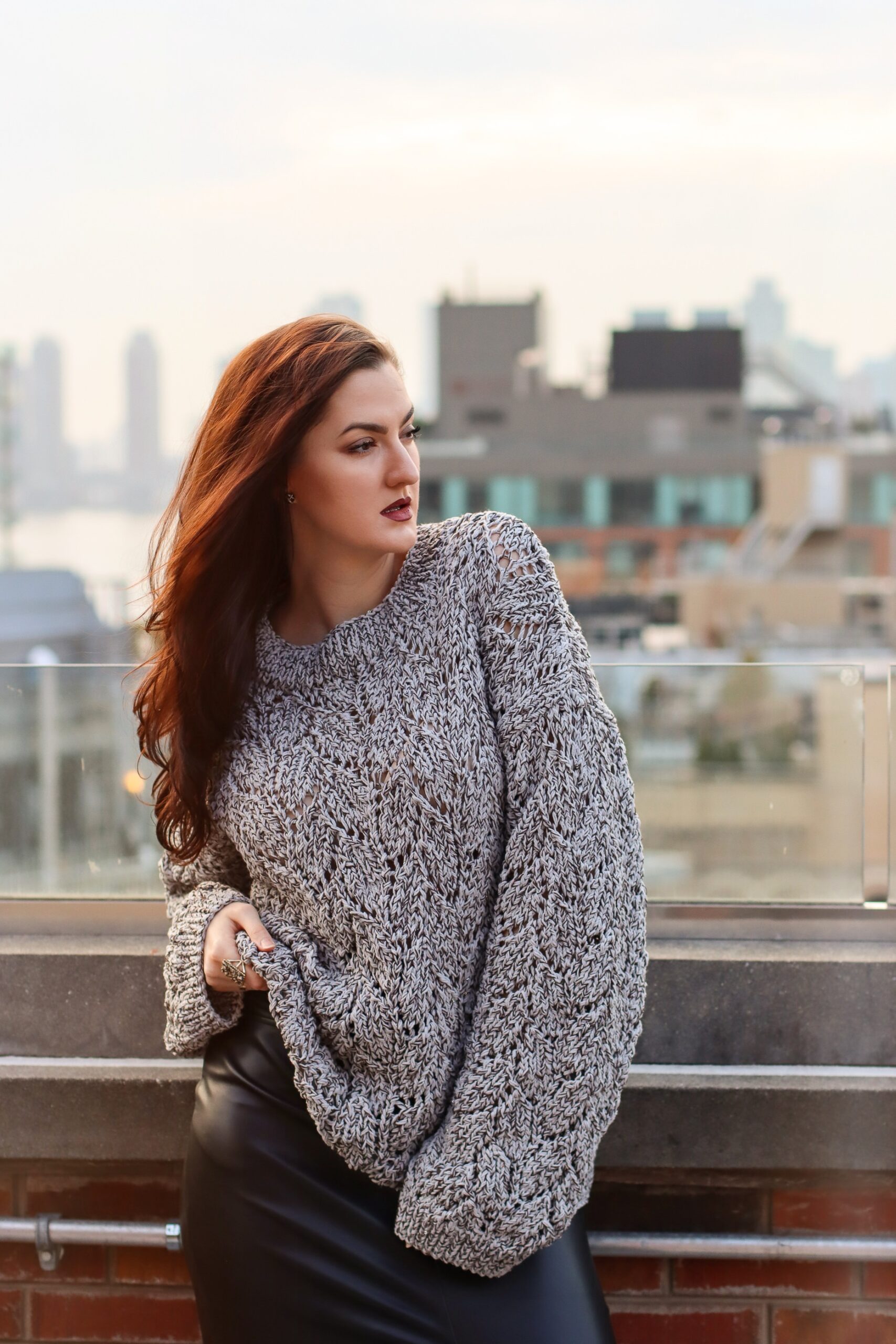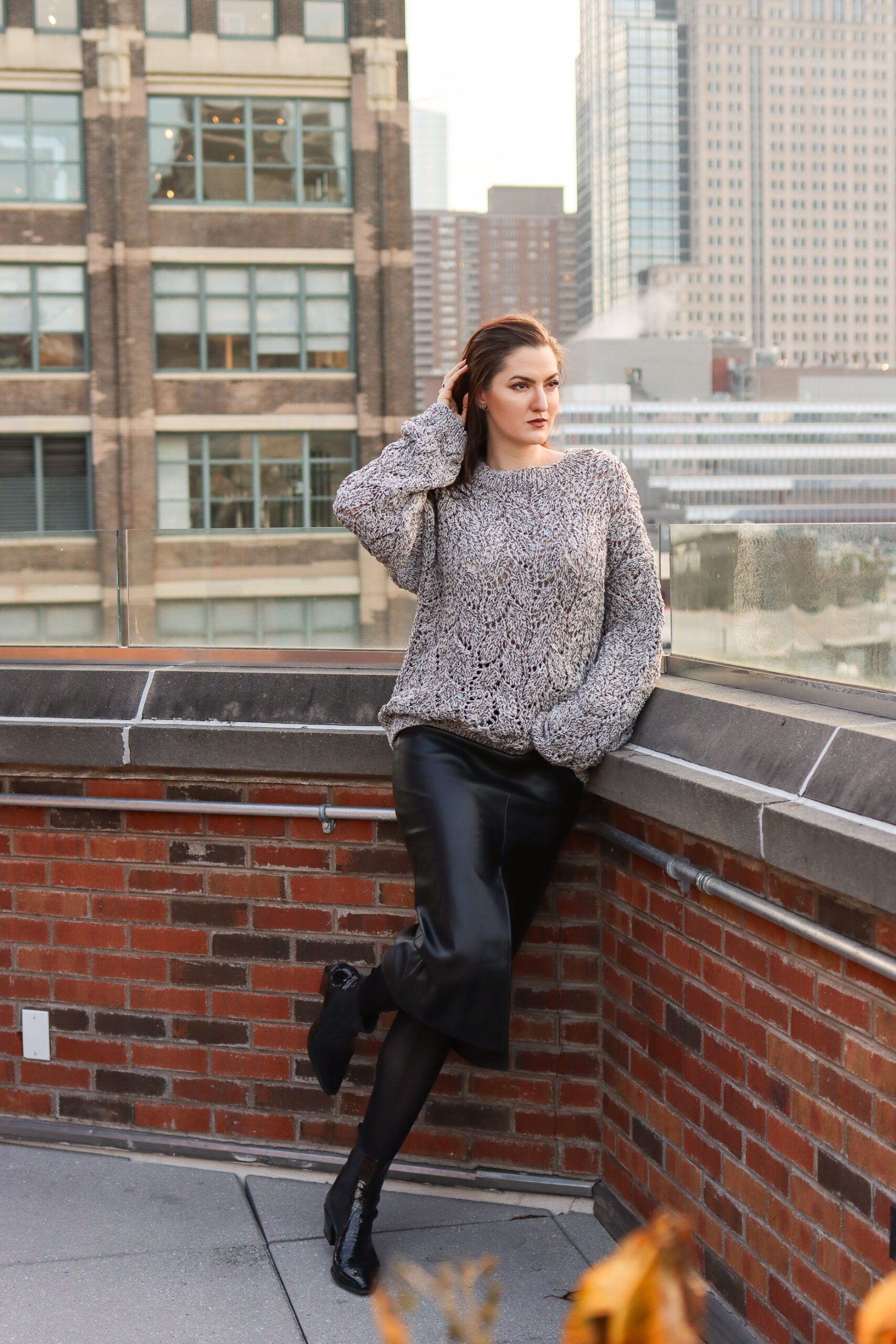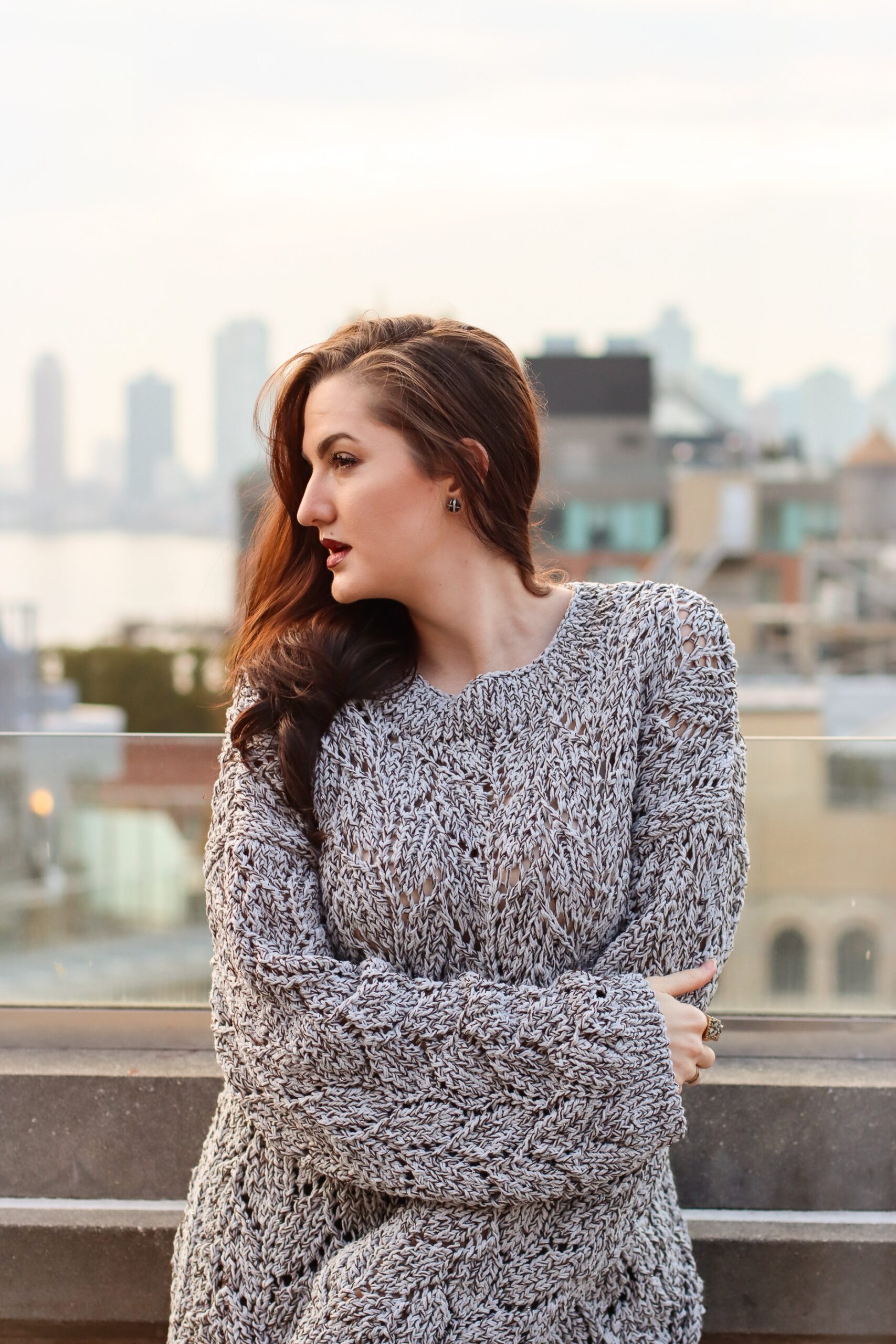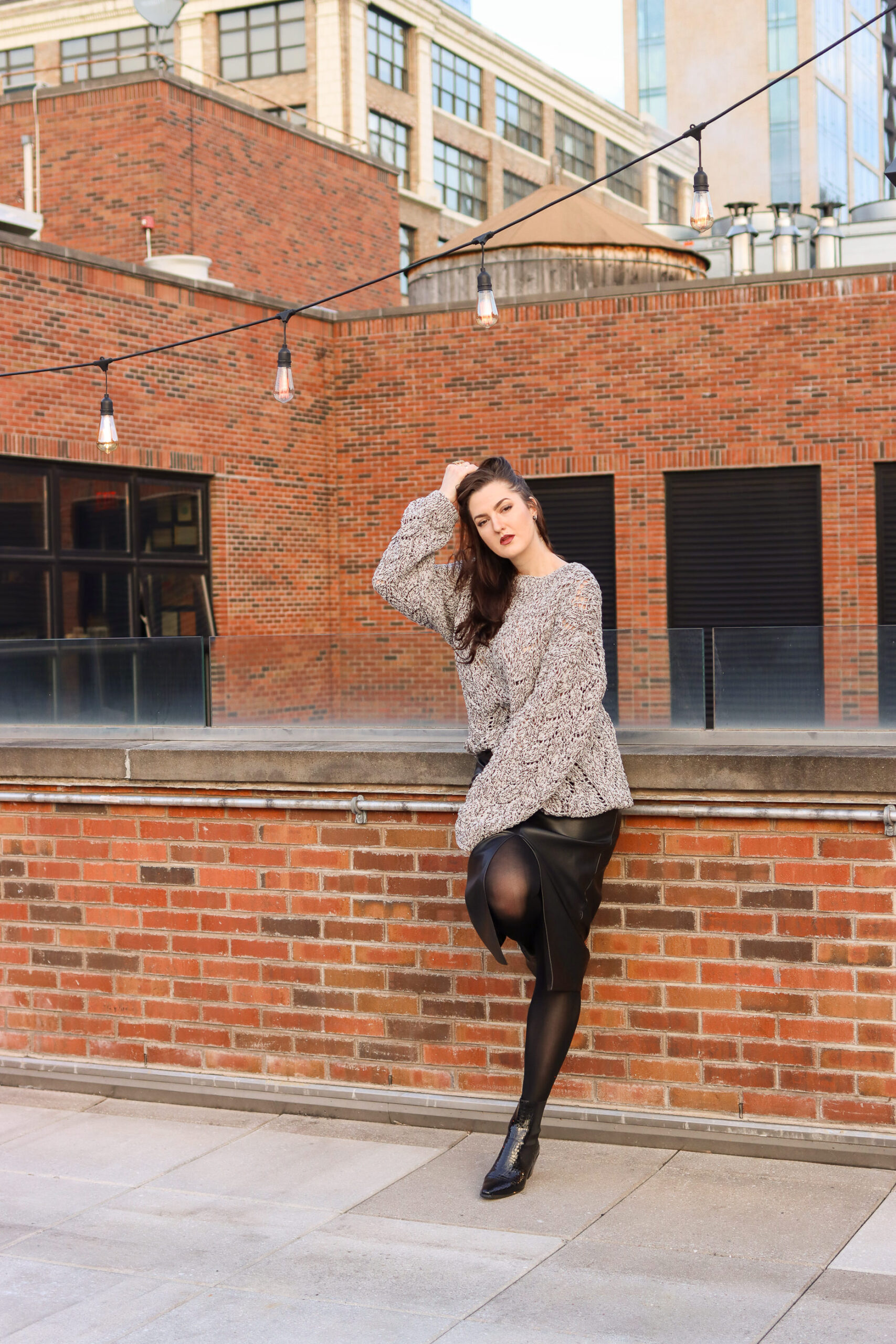This post is inspired by my mom’s amazing talent and hobby of creating handmade knits – and this gorgeous sweater she crafted in quite literally a week. She, in turn, was inspired by Brunello Cucinelli knits tagged with a hefty 4-digit price tag. The intricate texture of this piece, the weaving of delicate sequins just to add a tiny bit of sparkle, the oversized sleeves – chef’s kiss. I paired the sweater with all-black for this post – not to divert attention, but I do think the contrast of cozy chunky knit vs. glistening leather textures here is a win.


Why are hand-crafted, unique, high-quality knits a win? Rhetorical question. Even at the start of my sustainability journey around 4 years ago, I listed hand-crafted clothing as one amazing option to creating a truly sustainable wardrobe. Not only are you left with an original one-of-a-kind piece, you don’t contribute to creating demand for fast clothing. “This isn’t for everyone, but if you have sewing talent, you’re guaranteed an amazing closet that literally no one else can replicate and 100% reflective of your personality,” said 2019 Inna and Inna today can’t agree more.
The why not is probably the reason why many consumers choose not to prioritize sustainability when it comes to fashion: effort. Its not as easy or convenient to add hand-knit or handmade clothing to your closet as adding something to cart and checking out in 2 taps. The difference between the two options is colossal for your style, the environment, manufacturing trends and industry supply/demand. One is a complex process of obtaining materials, usually sourced from small local businesses, or finding a local artisan to work with, budgeting, mocking up ideas and sketches, going through multiple fittings, potentially backtracking and starting over… The second process is – as mentioned before – 2 taps on your phone. One important thing to keep in mind is reward: I know my readers here are already stylish, trend-savvy and generally up-to-date on the industry: you know the best street style looks feature vintage, limited-collection or archive items, small-brand pieces and – handmade clothing.
On this blog, we talk about ethical fashion, brands and trends transforming the industry and we also support Ukraine – quick break to donate $5!
Support the Armed Forces of Ukraine through donations for tactical & military aid.
Support the Armed Forces of Ukraine through financing purely defence initiatives.
Support my hometown – Sumy. Money raised is used to support territorial defenses.
Support a volunteer association “Zgraya” – helping soldiers, civilians & animals.
Donate to purchase medicine to send to wounded soldiers & hospitals on the front lines.







Knitting talents have not been passed on through generations in our family and I have zero patience for a hobby as intricate as embroidery, so the process here is entirely my mom’s + some tips I spotted from other ethical bloggers.
The first step is always inspiration: browse your favorite brands’ websites, bloggers socials, luxury runway compilations, etc. My go-to for inspiration is Pinterest where I have quarterly fashion boards per season and with the help of their AI suggestions, quickly compile collections of photos to draw inspiration for shopping, styling or the next handmade piece.
The next step is creating a budget and an action plan: see how much you’d be willing to spend to have the item made (obviously expecting to pay more for more elaborate creations and less for tailoring or re-creation) and think through logistics. If you don’t have someone in your family or circle of friends with a hobby or business to develop handmade clothing, UpWork is an excellent resource to hire a professional designer or artisan. Quickly searching through options, I can see US-based creators charge anywhere between $18-$100/hr, depending on your project. It’s easy to create an UpWork profile and publish a job request with your inspiration photo to get an accurate quote and a few proposals. Another option is working with a small local business in your area – I know we have a few alterations or tailoring studios in our neighborhood alone (Google maps is you go-to here).
Finally, you would need to source materials. My mom uses Etsy, where a ton of sellers offer an amazing selection of knits, fabrics and embroidery threads. The sweater I’m wearing is done with 9 rolls of cotton yarn at about $6/roll and 1 roll of sequin thread at $7/roll.
Of course, your process will look different than 3 generalized steps – depending on who you choose to work with or how your dream item looks. The end result is always worth it.









Let’s start a conversation. Tell me a little about yourself and what you thought about the post!
I approach this blog as a diary – taking you on my honest sustainable fashion & lifestyle journey, with sustainability aspects I slowly adopt, struggle with and feel passionate about. I’m building INNABOSE.COM to be an informative, visual & creative resource inspiring even the smallest changes in the world.
GENERAL BLOGGING TOPICS YOU’LL FIND HERE INCLUDE
#sustainablefashion
I’m also a Ukrainian New Yorker – having strong pride and patriotism for both: my homeland 

February 24, 2022 – my digital space shifted to include information about russia’s war on Ukraine, the devastation and destruction my home country is dealing with and the bravery, strength and inspiring spirit they are facing it with. A large portion of my posts today highlight Ukrainian brands, fashion, culture & the strong, incredible Ukrainians making gorgeous clothes you can buy & support local businesses, economy & people fighting for freedom every day. We are also a community who donates to Ukrainian organizations found in any of my recent posts!
#standwithukraine
Inna Bose